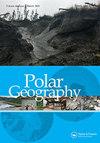Findings from two Arctic search and rescue exercises north of Spitzbergen
IF 1.6
Q3 GEOGRAPHY, PHYSICAL
引用次数: 10
Abstract
ABSTRACT With the implementation of the Polar Code in January 2017, the focus on search and rescue operations in polar waters have been increased due to the five-day survival requirement. This requirement poses a strain on all lifesaving appliances and causes the need for improved personal protection equipment, improved survival crafts and personal survival kits and possibly group survival kits. The paper reports on findings from search and rescue exercises north of Spitzbergen. The first exercise was carried out during late April 2016, utilizing SOLAS approved lifesaving appliances (LSA) equipment and the second exercise was conducted with improved LSA equipment during the first week of May 2017. Focus is on the ability to survive and the effectiveness of the improved LSA equipment. Furthermore, a discussion is given with respect to possible mitigation measures to ensure quick rescue to avoid the evacuated persons be exposed to an unnecessary long stay in the survival crafts. Of particular reference is the cruise industry and the industry’s efforts to provide customers with visits to even more remote cruise locations. The study indicates significant gaps between the functionality provided by the LSA equipment and the functionality required to comply with the International Maritime Organization Polar Code requirement of survival for the expected time to rescue, minimum 5 days.斯匹茨卑尔根岛北部两次北极搜救演习的结果
随着2017年1月《极地规则》的实施,极地水域的搜救行动受到了五天生存要求的关注。这一要求对所有救生设备造成压力,导致需要改进个人保护设备、改进救生手工艺品和个人救生包,可能还有团体救生包。这篇论文报道了在斯匹茨卑尔根北部进行的搜救演习的结果。第一次演习于2016年4月下旬进行,使用SOLAS批准的救生设备(LSA)设备,第二次演习于2017年5月的第一周使用改进的LSA设备进行。重点是生存能力和改进的LSA设备的有效性。此外,还讨论了为确保快速救援而可能采取的缓解措施,以避免撤离人员在救生艇中不必要地长时间停留。特别值得一提的是邮轮业,以及该行业为客户提供参观更偏远邮轮地点的努力。研究表明,LSA设备提供的功能与符合国际海事组织极地规则要求的预期救援时间(至少5天)的功能之间存在显著差距。
本文章由计算机程序翻译,如有差异,请以英文原文为准。
求助全文
约1分钟内获得全文
求助全文
来源期刊

Polar Geography
GEOGRAPHY, PHYSICAL-
CiteScore
5.30
自引率
0.00%
发文量
13
期刊介绍:
Polar Geographyis a quarterly publication that offers a venue for scholarly research on the physical and human aspects of the Polar Regions. The journal seeks to address the component interplay of the natural systems, the complex historical, political, economic, cultural, diplomatic, and security issues, and the interchange amongst them. As such, the journal welcomes comparative approaches, critical scholarship, and alternative and disparate perspectives from around the globe. The journal offers scientists a venue for publishing longer papers such as might result from distillation of a thesis, or review papers that place in global context results from coordinated national and international efforts currently underway in both Polar Regions.
 求助内容:
求助内容: 应助结果提醒方式:
应助结果提醒方式:


